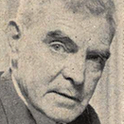
Article
New Distortion Criterion. Part 1: Audience Reaction to Non-Linearity Distortion
Electronic Technology
(1961)
Abstract
In any sound-transmission system non-linearity distortion is always present to some extent. The optimal design of line amplifiers, amplifiers for loudspeakers, modulators for radio transmitters, and the like, cannot be achieved until the rate of exchange has been established between the degree of distortion and the resulting deterioration of programme quality. In this article an attempt is made to establish this rate of exchange. Part I analyses the subjective aspect of the problem: experiments are described which separate out those features of the distorted sounds which are responsible for the audience reporting that they are unpleasant to listen to. Almost without exception the data conform to the comprehensive statement that the unpleasantness of a distorted sound is judged in terms of 'the time-rate-of-departure of the signal from normality. It is found that listeners are influenced by pitch, by loudness, and by contrast effects, and that they have very short-term memories of distortion phenomena.
Keywords
- Distortion,
- Sound,
- Subjective,
- Criterion
Disciplines
Publication Date
Spring April, 1961
Citation Information
Edmund Ramsay Wigan. "New Distortion Criterion. Part 1: Audience Reaction to Non-Linearity Distortion" Electronic Technology Vol. 38 Iss. 4 (1961) p. 128 - 137 Available at: http://works.bepress.com/edmund-wigan/7/
